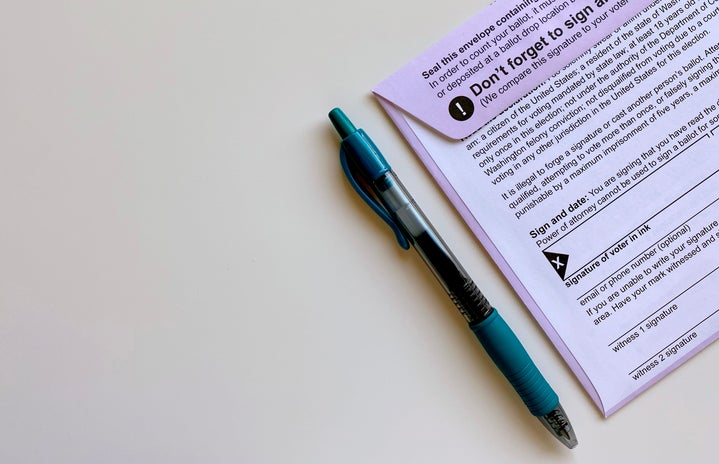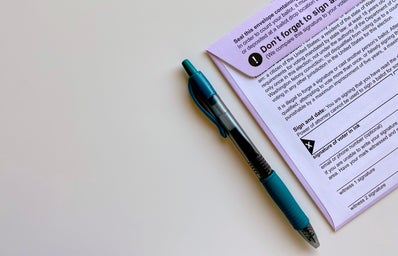It’s that time of the year when election season is in full effect! But– voting for the first time can be kind of overwhelming…
Between figuring out how to register, knowing who’s running and understanding the issues, it can all be a lot to take in. However, don’t let this discourage you this election season.
This college girl friendly guide will break down everything you need to know to confidently cast your ballot!
Step One: Make Sure You’re Registered to Vote
Before you do anything else, you need to make sure you’re registered to vote. Head to your state’s voter registration website and they’ll guide you through it step-by-step.
Each state has its own deadlines, so check the dates and make sure you’re all set before the cutoff.
If you attend an out-of-state school, make sure your registration is up-to-date. Once you’re registered, you’ll get info on where and how to vote—whether that’s in person, by mail, or even early voting.
Step Two: Find Out What’s Actually on the Ballot
You’re registered to vote… what’s next? Time to look at what’s on your ballot. You’ll probably see local positions to national positions. But the important part to focus on is the issues, especially the ones that directly affect us as women.
A few key issues to watch for include reproductive rights, workplace equality, and healthcare access.
Step Three: Understand Why Your Vote Matters
It is easy to feel like your one vote doesn’t count, but it truly does. Women have a lot at stake in every election, and here’s why your vote matters on these important issues:
Reproductive Rights: Depending on who gets elected, your state could see big changes when it comes to abortion access and birth control. If you care about having control over your body, vote for people who stand with you on this issue.
Workplace Equality: We’re in an ongoing fight for equal pay and safe workplaces. The people we elect make decisions about these issues, so if this matters to you, make sure your vote reflects that.
Affordable Healthcare: It’s not just about reproductive rights. Access to affordable healthcare, from routine checkups to mental health support, directly affects us. The right policies can make sure we get the care we need, without breaking the bank.
Step Four: Research the Candidates
Once you know what’s on the ballot, it’s time to do a research on who’s running to decide who will get your vote. Most candidates have websites that lay out their positions.
You can also find voter guides online that break down where they stand on important issues, especially when it comes to women’s rights.
Pro tip: Pay attention to both local and national races—sometimes the local politics can have a bigger impact on your day-to-day life than national politics.
Step Five: Get Out and Vote!
Now that you’re registered, know what’s at stake, and have researched the candidates, it’s time to actually vote.
You can vote early, vote in person on Election Day, or even mail in your ballot. Just double-check your state’s rules so you know when and how to vote.
And by following those steps, you’ve officially aced election season!
Step Six: Spread the Word!
Remember, every vote is a voice, as women we can use our passions to amplify our voice.
Voter Research Work Group Lead, Taylor Leonard, with North Carolina A&T’s Office of Leadership and Civic Engagement shares how her interests influence her civic engagement.
“As a student interested in research, I worked with other student researchers and leaders to gather information about our community’s interests and relate it to the issues and positions on the upcoming ballot!,” said Leonard.


